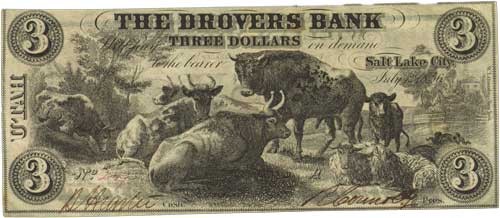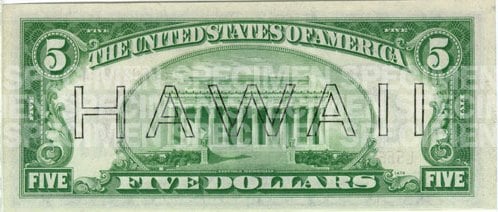Money. We use it daily, whether electronically or as cash (the demise of which is greatly exaggerated). We are all are familiar with it in its current form. But how much do you know about the history of money? Use these five surprising facts to help history come alive for your students through currency.
1. Before the Civil War, paper money could be issued by nearly anyone
Between 1837 and 1866, a period now often called the “Free Banking Era,” lax federal and state banking laws permitted virtually anyone to open a bank and issue currency. Paper money was issued by states, cities, counties, private banks, railroads, stores, and churches. In the 1860s, an estimated 8,000 different state banks were circulating bank notes in denominations from ½ cent to $20,000!
These notes came in a variety of sizes, colors, and designs, and that combined with an environment of uneven regulations from area to area is widely considered to have increased the public’s appetite for centralized banking regulation.
As the American population moved Westward, some of the issuing institutions earned the dubious nickname “wildcat banks,” in reference to their remote locations, more accessible to wildcats than people. The Free Banking Era ended with the passing of the National Bank Act of 1863.
2. Postage stamps were temporarily authorized to be used as currency during the Civil War
During the Civil War, widespread hoarding of gold and silver coins and the need to divert metals created a desperate shortage of small change. Paper tickets and bills were frequently substituted, but the scarcity was so great that Congress authorized postage stamps as equivalent “Fractional Currency.”
Due to the Postmaster General’s frustration as post office employees became besieged with customers trying to make change instead of transacting more traditional post office business, from 1862 to 1876 the federal government issued more than $368 million in Fractional Currency notes in three- to fifty-cent denominations. Nicknamed “shinplasters,” these paper “coins” were much smaller in size than our existing currency. After the Civil War, Fractional Currency was no longer needed and was discontinued by 1876.
3. The highest-denomination note ever printed was $100,000
Federal Reserve notes were originally issued in denominations ranging from $5 to $10,000, although the primary purpose of the $500, $1,000, $5,000, and $10,000 notes was to facilitate bank transfer payments. The largest bank transfer note printed was the $100,000 note, which features a portrait of President Woodrow Wilson, signer of the Federal Reserve Act in 1913. The $100,000 note was never circulated among the general public. A $100,000 note is on display at our Head Office in San Francisco and can be viewed by booking a tour.
The $100 note has been the largest denomination printed since 1969. The $1 denomination was added in 1963; the $2 denomination was added in 1976 to commemorate the nation’s bicentennial. All U.S. currency issued since the first paper money was issued by the U.S. government in 1861 remains redeemable at face value.
4. Foreign coins were once acceptable legal tender in the United States
In 1690, the Massachusetts Bay Colony was the first to issue Colonial money to meet the high demand for trade between colonies and as a response to the shortage of foreign coins. Before gold and silver were discovered in the West, a 1793 law permitted Spanish dollars and other foreign coins to be part of the American monetary system. Foreign coins were not banned as legal tender until 1857.
Related side note: Materials such as animal pelts, tobacco, and wampum – a kind of highly polished bead made from clam or whelk shells – were also used as currency at various points in our country’s history.
5. During World War II, the U.S. Treasury replaced all American currency in Hawaii with special issue notes
During World War II, the U.S. Treasury replaced all United States currency in Hawaii with special issue notes as a precautionary measure in the event of an enemy forces’ victory. Had enemy forces conquered Hawaii, the distinctively marked currency would have been withdrawn from circulation to avoid the United States financing the war effort of enemy troops.
Types of these notes (with brown seals and serial numbers) included $1 Silver Certificates and $5, $10, and $20 Federal Reserve notes. On October 21, 1944 all currency restrictions were revoked and normal monetary conditions returned to that area.
* Some images in this post are scarred with ‘specimen’ to deter reproduction. The word is not part of the original note design.
What historical currency facts do you like to share with your students?




